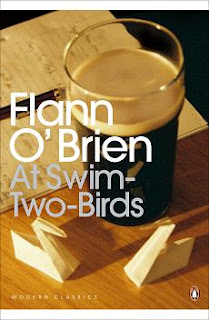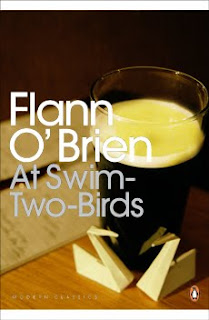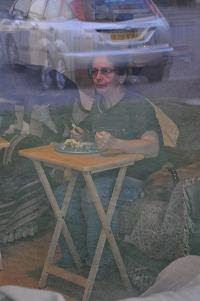HAVING placed in my mouth sufficient bread for three minutes’ chewing, I withdrew my powers of sensual perception and retired into the privacy of my mind, my eyes and face assuming a vacant and preoccupied expression. I reflected on the subject of my spare-time literary activities. One beginning and one ending for a book was a thing I did not agree with. A good book may have three openings entirely dissimilar and inter-related only in the prescience of the author, or for that matter on hundred
Examples of three separate openings – the first: The Pooka MacPhellimey, a member of the devil class, sat in his hut in the middle of a firwood meditating on the nature of the numerals and segregating in his mind the odd ones from the even. He seated at his diptych or ancient two-leaved hinged writing-table with inner sides waxed. His rough long-nailed fingers toyed with a snuff-box of perfect rotundity and through a gap in his teeth he whistled a civil cavatina. He was a courtly man and received honour by reason of the generous treatment he gave his wife, one of the Corrigans of Carlow.
The second opening: There was nothing unusual in the appearance of Mr John Furriskey but actually he had one distinction that is rarely encountered – he was born at the age of twenty-five and entered the world with a memory but without a personal experience to account for it. His teeth were well-formed but stained by tobacco, with two molars filled and a cavity threatened in the left canine. His knowledge of physics was moderate and extended to Boyle’s Law and the Parallelogram of Forces.
The third opening: Finn MacCool was a legendary hero of old Ireland. Though not mentally robust, he was a man of superb physique and development. Each of his thighs was as thick as a horse’s belly, narrowing to a calf as thick as the belly of a foal. Three fifties of fosterlings could engage with handball against the wideness of his backside, which was large enough to halt the march of men through a mountain-pass.
I hurt a tooth in the corner of my jaw with a lump of the crust I was eating. This recalled me to the perception of my surroundings.
It is a great pity, observed my uncle, that you don’t apply yourself more to your studies. The dear knows your father worked hard enough for the money he is laying out on your education. Tell me this, do you ever open a book at all?
I surveyed my uncle in a sullen manner. He speared a portion of cooled rasher against a crust on the prongs of his fork and poised the whole at the opening of his mouth in a token of continued interrogation.
Description of my uncle: Red-faced, bead-eyed, ball-bellied. Fleshy about the shoulders with long swinging arms giving ape-like effect to gait. Large moustache. Holder of Guinness clerkship the third class.
I do, I replied.
He put the point of his fork into the interior of his mouth and withdrew it again, chewing in a coarse manner.
Quality of rasher in use in household: Inferior, one and two the pound.
Well faith, he said, I never see you at it. I never see you at your studies at all.
I work in my bedroom, I answered.
(From fujifilmstudentawards.co.uk)



















































